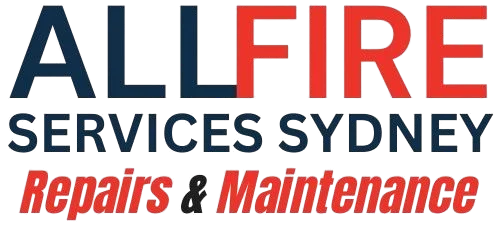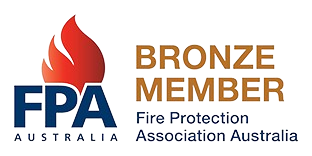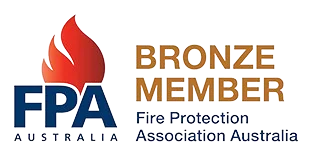
The final change, effective as early as 13 February 2026, pertains to the certification of installed fire safety measures within a building. A new accreditation scheme, distinct from the current FPAA scheme for certifying installed fire safety measures, is under development. Under this new scheme, an accredited person must provide sign-off for all installed fire safety measures before a Fire Safety Schedule is issued for the building. From 2026 onwards, the Accredited Person who certifies the fire safety measures must be listed on the certificate of installation. Notably, the person certifying the fire safety measures cannot be the individual who installed them, although they can be from the same company.
Furthermore, starting from 13 February 2026, routine maintenance on fire safety measures must be conducted in accordance with AS 1851:2012. This requirement applies to all Class 1b-9 buildings, both new and existing, where an Annual Fire Safety Statement is required. It is important to mention that this requirement does not encompass fire safety measures not covered by AS 1851:2012 or those subject to a different maintenance process specified in the Fire Safety Schedule. Consequently, owners are expected to maintain records of the maintenance work performed on fire safety measures, which may be subject to inspection by local councils or FRNSW at any time.
In summary, the changes introduced by the Fire Safety Regulation 2022 are being implemented in three stages:
Stage 1 (already in effect) – Update to the handling of minor alterations to Fire Safety Schedules.
Stage 2 (effective from 1 August 2023) – Mandatory referral of all Performance Solutions for Class 2-9 buildings to FRNSW during the brief, CC, and OC stages, along with the use of a new Fire Safety Schedule Template.
Stage 3 (effective from 13 February 2026) – Introduction of a new accreditation scheme for the certification of fire safety measures and the requirement for all fire safety measures to comply with AS 1851:2012 during routine maintenance.
Closing Notes
The Fire Safety Regulation 2022 brings about crucial changes to fire safety protocols in Class 1b – 9 buildings, with a phased implementation plan spanning from 2023 to 2025. These changes encompass various aspects such as updating Fire Safety Schedules, mandatory templates, consultation requirements with Fire & Rescue NSW (FRNSW), and the certification and maintenance of fire safety measures. The amended regulations aim to enhance fire safety standards and streamline the processes involved in ensuring compliance. Building owners, certifiers, and FRNSW will need to familiarise themselves with these changes and adapt their practices accordingly to ensure the safety and well-being of occupants in these buildings. By implementing these measures, the regulatory authorities seek to create a safer built environment and reduce potential risks associated with fire incidents.
Reference
Environmental Planning and Assessment (Development Certification and Fire Safety) Regulation 2021

The final change, effective as early as 13 February 2026, pertains to the certification of installed fire safety measures within a building. A new accreditation scheme, distinct from the current FPAA scheme for certifying installed fire safety measures, is under development. Under this new scheme, an accredited person must provide sign-off for all installed fire safety measures before a Fire Safety Schedule is issued for the building. From 2026 onwards, the Accredited Person who certifies the fire safety measures must be listed on the certificate of installation. Notably, the person certifying the fire safety measures cannot be the individual who installed them, although they can be from the same company.
Furthermore, starting from 13 February 2026, routine maintenance on fire safety measures must be conducted in accordance with AS 1851:2012. This requirement applies to all Class 1b-9 buildings, both new and existing, where an Annual Fire Safety Statement is required. It is important to mention that this requirement does not encompass fire safety measures not covered by AS 1851:2012 or those subject to a different maintenance process specified in the Fire Safety Schedule. Consequently, owners are expected to maintain records of the maintenance work performed on fire safety measures, which may be subject to inspection by local councils or FRNSW at any time.
In summary, the changes introduced by the Fire Safety Regulation 2022 are being implemented in three stages:
Stage 1 (already in effect) – Update to the handling of minor alterations to Fire Safety Schedules.
Stage 2 (effective from 1 August 2023) – Mandatory referral of all Performance Solutions for Class 2-9 buildings to FRNSW during the brief, CC, and OC stages, along with the use of a new Fire Safety Schedule Template.
Stage 3 (effective from 13 February 2026) – Introduction of a new accreditation scheme for the certification of fire safety measures and the requirement for all fire safety measures to comply with AS 1851:2012 during routine maintenance.
Closing Notes
The Fire Safety Regulation 2022 brings about crucial changes to fire safety protocols in Class 1b – 9 buildings, with a phased implementation plan spanning from 2023 to 2025. These changes encompass various aspects such as updating Fire Safety Schedules, mandatory templates, consultation requirements with Fire & Rescue NSW (FRNSW), and the certification and maintenance of fire safety measures. The amended regulations aim to enhance fire safety standards and streamline the processes involved in ensuring compliance. Building owners, certifiers, and FRNSW will need to familiarise themselves with these changes and adapt their practices accordingly to ensure the safety and well-being of occupants in these buildings. By implementing these measures, the regulatory authorities seek to create a safer built environment and reduce potential risks associated with fire incidents.
Reference
Environmental Planning and Assessment (Development Certification and Fire Safety) Regulation 2021



